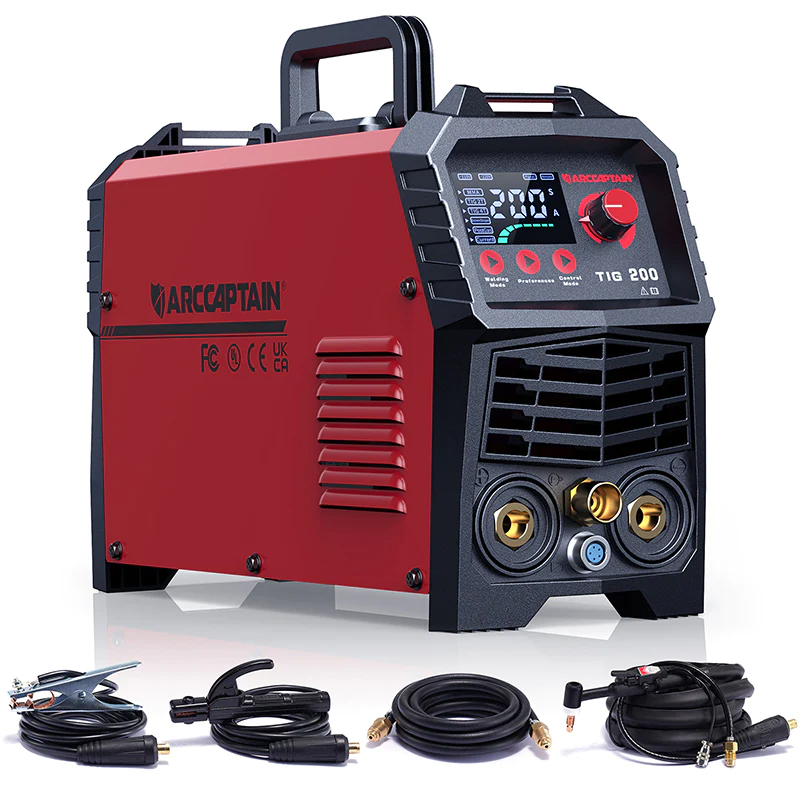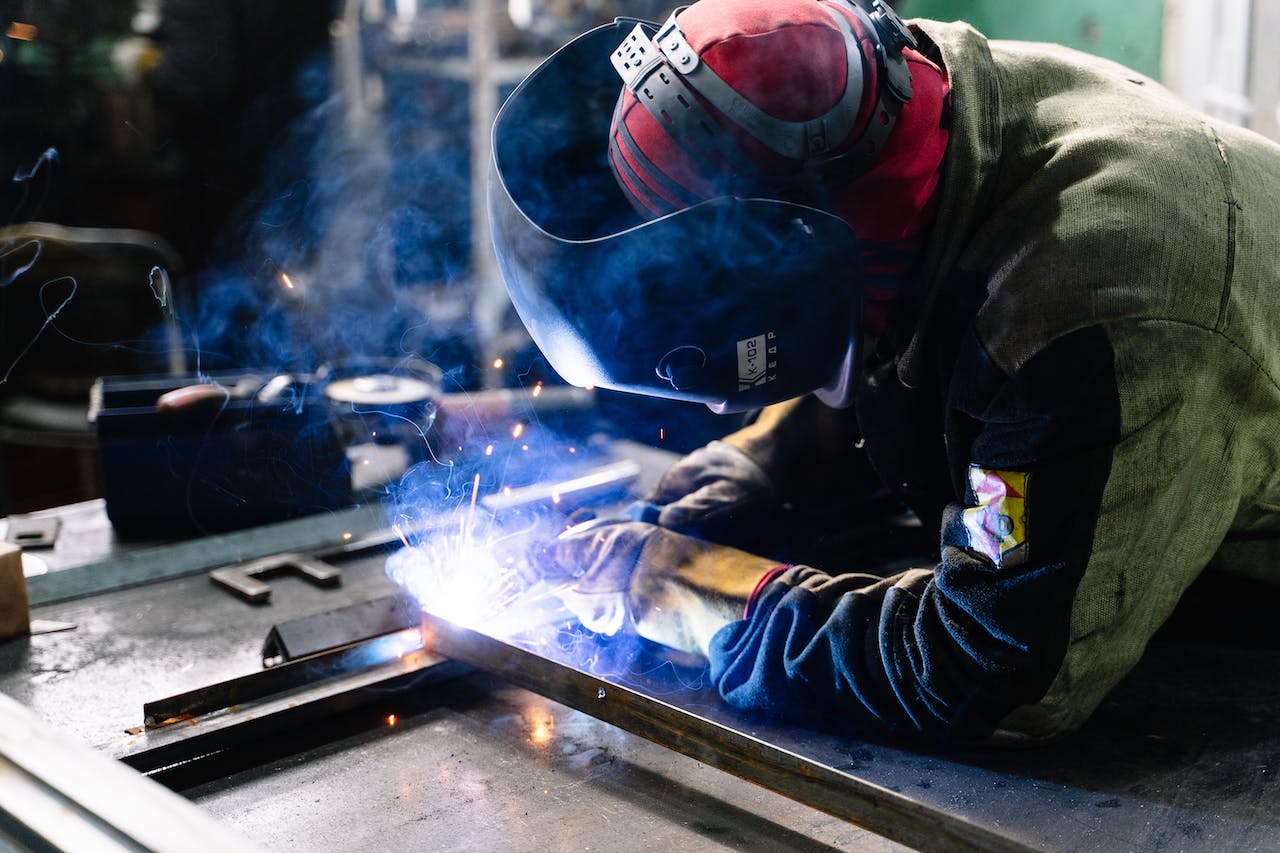Introduction
Are you looking for a reliable and efficient welding solution for your welding projects? Look no further than our premium-quality welders. Whether you’re a professional welder or a hobbyist, our welders are designed to meet the needs of people from all walks of life. With advanced technology and durable construction, our welders provide the power and precision you need to tackle any welding job. Invest in a welder that will help you get the job done right the first time. Choose our welders and experience the difference.

– What is a TIG welder?
Are you looking for a versatile welding option that provides clean and high-quality welds? A TIG welder may be just what you need. TIG stands for Tungsten Inert Gas, and it is a welding process that uses a non-consumable tungsten electrode to produce the weld. This process allows for greater control and precision compared to other welding methods, making it ideal for welding thinner metals and more intricate projects.
TIG welding is favored by people in various industries, such as automotive, aerospace, and art fabrication, due to its ability to produce clean and aesthetically pleasing welds. With the right TIG welder, you can achieve strong and durable welds on materials like stainless steel, aluminum, and copper. The versatility of TIG welding makes it a popular choice for both professional welders and hobbyists alike.
Investing in a TIG welder for your welding needs can provide you with the ability to create high-quality welds with ease. Not only does it offer precise control and clean finishes, but it also allows you to work with a wide range of metals. Whether you’re in the market for a TIG welder for your professional workshop or your projects, having this tool in your arsenal will open up a world of possibilities in your welding endeavors.
– Why is TIG welding popular?
Are you in the market for a new welder? If you’re considering TIG welding, you’re not alone. TIG welding has become a popular choice for people in various industries, from automotive and aerospace to plumbing and metal fabrication.
One of the main reasons TIG welding is so popular is its versatility. This welding process allows for precise control over the heat input, resulting in clean and high-quality welds. Whether you’re working with thin or thick materials, TIG welding can produce strong and aesthetically pleasing welds.
TIG welding also offers the ability to weld a wide range of metals, including stainless steel, aluminum, copper, and titanium. This makes it a valuable tool for people who work with a variety of materials.
Additionally, TIG welding produces minimal spatter and fumes, creating a cleaner work environment. This not only benefits the person doing the welding but also the overall shop or workspace.
The process of TIG welding is also relatively easy to learn, making it accessible to people of all skill levels. With a bit of practice, anyone can become proficient at TIG welding and produce high-quality welds.
So, if you’re looking for a versatile, clean, and user-friendly welding process, consider investing in a TIG welder. Its popularity is well-deserved and could be the perfect fit for your welding needs.
Basics of TIG Welding
When it comes to welding, TIG (Tungsten Inert Gas) welding is a popular choice for people who need precise, clean, and high-quality welds. TIG welding uses a tungsten electrode to create the weld and requires a steady hand and attention to detail. It’s a versatile process that can be used on a variety of metals, making it a valuable skill to have in your welding toolkit.
TIG welding is known for its ability to produce aesthetically pleasing welds with minimal splatter, making it a great choice for projects where appearance is important. The process also allows for greater control over the heat input, resulting in less distortion and warping of the materials being welded.
A good TIG welder is a must-have for anyone looking to expand their welding capabilities. With the right equipment, you can tackle a wide range of welding projects with precision and ease. Whether you’re a beginner looking to learn the basics of TIG welding or an experienced welder in need of a reliable machine, investing in a quality TIG welder is a smart choice.
When choosing a TIG welder, look for a machine that offers a range of features to suit your specific needs. From adjustable heat settings to advanced control options, a good TIG welder will give you the flexibility and control you need to tackle any welding project.
If you’re ready to take your welding skills to the next level, consider adding a TIG welder to your toolkit. With its clean, precise welds and versatility, TIG welding is a valuable skill that can open up new opportunities for you as a welder. Choose a reliable TIG welder and get ready to take on a wide range of welding projects with confidence.
– How does TIG welding work?
TIG welding, or Tungsten Inert Gas welding, is a popular method for joining metal together. It works by creating an electrical arc between a tungsten electrode and the metal being welded.
One of the main advantages of TIG welding is its precise control of heat, making it perfect for welding thin materials. The inert gas used in the process protects the weld zone from atmospheric contamination, resulting in clean and high-quality welds.
TIG welding is a versatile technique that can be used on a wide range of metals, including stainless steel, aluminum, and nickel alloys. It is often the method of choice for welders needing to produce high-quality and aesthetically pleasing welds.
Investing in a TIG welder can greatly expand your capabilities as a welder and provide you with the tools to complete a wider range of projects with precision and skill. So, consider adding a TIG welder to your workshop and take your welding to the next level.
– What are the advantages of TIG welding over other methods?
Are you looking for a welding method that provides precise, clean, and visually appealing results? Look no further than TIG welding. TIG welding, also known as Gas Tungsten Arc Welding, offers several advantages over other welding methods that make it a top choice for many people in the industry.
One of the primary advantages of TIG welding is its ability to produce high-quality, precise welds. The TIG process allows for greater control over the heat input and the welding filler material, resulting in clean and aesthetically pleasing welds. This makes TIG welding particularly popular for applications where appearance and quality are paramount, such as in the automotive and aerospace industries.
In addition to its precise welds, TIG welding also offers versatility in welding various metals. Whether you’re working with stainless steel, aluminum, or other exotic metals, TIG welding can provide excellent results without sacrificing the integrity of the base material.
Furthermore, TIG welding produces minimal spatter and fumes, creating a cleaner working environment for you and your team. This not only improves safety but also reduces the need for post-weld clean-up, saving you time and effort in the long run.
Overall, TIG welding is a superior choice for those seeking precise, high-quality welds on a variety of materials. If you’re looking for a welding method that offers exceptional control, clean results, and versatility, a TIG welder is the perfect addition to your workshop.
– What are the limitations of TIG welding?
TIG welding, also known as Gas Tungsten Arc Welding, is a popular welding method known for its precision and clean welds. However, like any welding method, TIG welding also has its limitations.
One limitation of TIG welding is its slower welding speed compared to other welding methods such as MIG welding. This can make it less suitable for larger and thicker materials that require high productivity and faster welding times.
Another limitation is the difficulty of TIG welding on dirty or rusty materials. TIG welding requires a clean surface to achieve the best results, so if you are working with materials that are not perfectly clean, you may encounter challenges.
TIG welding also requires a high level of skill and experience to master. It involves simultaneously controlling the welding torch, filler material, and pedal for current control, making it more difficult for inexperienced welders to produce consistent, high-quality welds.
Overall, while TIG welding offers numerous benefits, people need to be aware of its limitations to make an informed decision about which welding method to use for their specific projects.
Components of a TIG Welder
When it comes to welding, TIG welding is a popular choice for many people. TIG welders use a non-consumable tungsten electrode to produce the weld, making it a versatile and precise method for joining metals.
One of the key components of a TIG welder is the power source. TIG welders typically use either AC or DC power, with AC being suitable for welding aluminum and magnesium, and DC being suitable for welding steel and stainless steel.
Another important component is the torch, which holds the tungsten electrode and provides the shielding gas to protect the weld from contamination. TIG torches come in various sizes and styles, allowing for flexibility in different welding applications.
The shielding gas is also critical to the TIG welding process, as it protects the weld from atmospheric contamination. Typically, argon gas is used for TIG welding, but other gases can be used for specific applications.
Finally, the foot pedal control is an essential component of a TIG welder, as it allows the welder to control the welding current and heat input, providing precise control over the welding process.
When considering the purchase of a TIG welder, it is important to consider the quality and reliability of these components. Investing in a high-quality TIG welder with reliable components will ensure a smooth and efficient welding process for all your projects.
– Power source
When it comes to choosing a welder, the power source is a crucial factor to consider. Different welding processes require different types of power sources, so it’s important to choose the right one for the job.
Our welders are available with a variety of power sources, including AC, DC, and inverter-based options. Each power source has its own set of advantages and can be used for different applications.
AC power sources are commonly used for welding materials like aluminum, while DC power sources are often used for welding steel. Inverter-based power sources are known for their portability and energy efficiency.
No matter what type of welding you need to do, we have a welder with the right power source for the job. Our variety of power sources ensures that you can find the perfect welder for your specific needs, whether you’re working on a small DIY project or a large industrial job.
Don’t settle for a welder with a limited power source – choose a welder from us and get the power you need for any welding task.
– Foot pedal control
When it comes to welding, having precise control over your equipment is key. A foot pedal control allows you to adjust your welding machine with ease, giving you the ability to fine-tune the power and current while working. With this added level of control, you can achieve cleaner and more accurate welds, resulting in higher-quality work. Plus, using a foot pedal is more ergonomic and convenient than reaching for dials or buttons on the machine itself. Consider investing in a welder with foot pedal control to enhance your welding capabilities and produce top-notch results.
– Torch and electrode holder
Are you tired of struggling with poorly designed torches and electrode holders? Look no further. Our welders are equipped with durable and efficient torch and electrode holders, ensuring that your welding process is smooth and efficient. With our high-quality holders, you can focus on getting the job done without any hassle. Choose a welder that puts your needs first.
– Gas supply system
When it comes to welding, the gas supply system is an essential component of the process. Whether you’re a professional welder or a hobbyist, having a reliable gas supply system is crucial for achieving high-quality welds.
With our top-of-the-line welders, you can trust that the gas supply system is designed for maximum efficiency and consistency. Our systems are built to ensure a steady flow of gas, providing the perfect environment for a smooth and clean welding process.
Investing in a welder with a dependable gas supply system is a smart choice for people who want to achieve precise and professional results. When you choose our welders, you can have confidence in the performance of the gas supply system, allowing you to focus on the task at hand without worrying about interruptions or inconsistencies.
Whether you’re working on a big project or just doing some small repairs around the house, having a reliable gas supply system is key to producing high-quality welds. Choose a welder from us and experience the difference a quality gas supply system can make in your welding process.
Setting up a TIG Welder
Setting up a TIG welder may seem daunting at first, but with the right guidance, it can be a smooth process. First, ensure that you have a clean and well-ventilated work area. Next, gather all the necessary materials, including the TIG welder, welding helmet, tungsten electrode, filler rod, and appropriate safety gear.

Before starting, it’s important to familiarize yourself with the welder’s manual and settings. Adjust the current, gas flow, and other settings according to the type and thickness of the material you will be welding. Proper settings will ensure a clean and strong weld.
Once everything is set up, it’s time to prep the material. Clean the surface to be welded thoroughly, as any contaminants can affect the weld quality. Position the workpieces with proper alignment and tack weld them together to hold them in place.
Now, you’re ready to start welding. Strike an arc with the tungsten electrode and begin adding filler metal as needed. Keep a steady hand and maintain a consistent travel speed for a uniform weld bead.
After completing the weld, allow it to cool before inspecting and cleaning it as necessary. With the right setup and technique, a TIG welder can produce high-quality, precise welds suitable for a wide range of applications.
Investing in a reliable TIG welder can make all the difference in your welding projects. It offers precise control and produces clean, professional-looking welds that will stand the test of time. Whether you’re a hobbyist or a professional, a TIG welder is a valuable tool that will enhance your welding capabilities. So why wait? Upgrade your workshop with a TIG welder and take your welding to the next level.
– Selecting the appropriate machine settings
Are you looking for a dependable welder that offers consistently high-quality performance? Look no further! When it comes to selecting the appropriate machine settings, it’s important to have a welder that provides precise control and accuracy. Our top-of-the-line welders are designed to meet the needs of people just like you. With easy-to-use controls and customizable settings, you can achieve the perfect weld every time. Don’t settle for subpar welds – invest in a welder that puts the power in your hands.
– Adjusting the gas flow rate and tungsten electrode size
When it comes to welding, the type of gas and tungsten electrode you use can make a big difference in the quality of your welds. Adjusting the gas flow rate and tungsten electrode size to match your specific welding needs is essential for achieving the best results.
Choosing the right gas flow rate for your welder is crucial for achieving a clean, efficient weld. Too little gas flow can result in impurities and contamination in your weld, while too much can lead to excessive splatter and a poor weld appearance. By adjusting the gas flow rate to the recommended level for your specific welding project, you can ensure a smooth, strong weld that meets your standards.
In addition to adjusting the gas flow rate, choosing the right tungsten electrode size is also important for achieving precise and consistent welds. The size of the electrode dictates the amount of heat transferred to the workpiece, so using the correct size for your specific welding application is crucial. Whether you need a smaller electrode for fine, detailed work or a larger one for thicker materials, having the right tungsten electrode size on hand for your welder will ensure that you can tackle any welding project with confidence.
By taking the time to adjust the gas flow rate and choose the appropriate tungsten electrode size for your welding needs, you can ensure that your welds are strong, clean, and professional-looking. Investing in a quality welder with customizable gas flow and electrode size options will give you the flexibility to tackle a wide range of welding projects with ease. So, don’t hesitate to invest in a reliable welder that allows you to adjust these settings as needed for your welding work.

